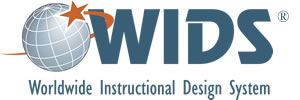- 07 Sep 2023
- 2 Minutes to read
- Print
- DarkLight
- PDF
Performance-Based Learning Model
- Updated on 07 Sep 2023
- 2 Minutes to read
- Print
- DarkLight
- PDF
Performance-based learning is an approach to learning and teaching in which the required results, or competencies, are specified before the instruction. Learners must demonstrate or perform those skills successfully to complete the learning experience.
Features of Performance-Based Learning
Performance-based learning has four essential features.
Feature 1: Competencies are identified, verified, and made public in advance of the instruction. They are clearly stated in performance terms. Competencies answer the question, “What will the learner be able to do?”
Feature 2: Performance-based learning requires the learner to perform the competency. Assessment of the competency takes the learner’s knowledge into account, but the performance is the primary evidence that the learner has mastered the competency.
In other words, the final measure of competence is whether the learner can perform each competency.
Feature 3: Performance standards are explicitly stated and made public, in advance of assessing the performance. In other words learners should never have to wonder what is expected.
In addition, performance standards provide the criteria for assessment so learners can be assessed against a pre-set standard, not against other learners.
Feature 4: The learning activities and teaching strategies provide opportunities for learners to develop the competencies.
- A variety of learning strategies are used.
- Learners are given opportunities to practice skills prior to assessment.
- Learners are given periodic feedback.
Performance-Based Learning Assumptions
There are several assumptions that underlie performance-based learning.
- Learning can be described in terms of performances.
- Learners should be informed of the competencies, performance standards, and grading “up front.”
- Learners should be active, not passive.
- Learners should have responsibility for learning.
- The credential is earned by demonstration of competence.
- Achievement is measured according to established criteria.
The WIDS Model
The WIDS Model makes sense to educators because it integrates current learning theory and practice into a practical model that brings together critical elements of performance-based design. In line with strategic planning, the WIDS Model guides teachers and designers to design from the inside out. In other words, what they intend to achieve drives how they approach the task.
The model infuses broad, transferable skills called core abilities (skills, such as, communication, problem-solving, and critical thinking) into occupational and discipline-specific instruction. Flexibility within the model makes it adaptable to varied instructional intents and missions—both academic and technical.
Emphasizing results, the WIDS model recognizes three performance levels. The broadest level incorporates exit learning outcomes, such as, program outcomes, general education outcomes, and core abilities—skills all successful individuals need regardless of occupation or life roles. At the next level, competencies describe major discipline or occupationally-specific skills. Each competency is clarified by performance standards specifying criteria and strategies for assessment. Learning objectives are the enabling instructional outcomes. They describe the lower level, supporting knowledge, skills, and attitudes needed to master a given competency.
WIDS offers a model for strategic planning of learning. After setting learning goals -“what,” and establishing criteria for determining “when,” teachers or designers plan strategies for “how.” These questions serve as a guide through a logical process, which leads to effective teaching and learning.
From the learner’s point of view, however, learning moves from the outside in. The learners begin with the “how” and aim for the “what” like a target. The WIDS Model requires teachers to provide learners with precise information about performance expectations at the beginning of a learning experience. As a result, learners set out with a clear vision of the requirements for successful completion.

